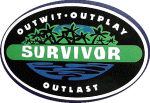 Take off our rational blindfolds…
Take off our rational blindfolds…
Dan Airely, Richard Thaley, Cass Sunstein, Daniel Kahneman, Ran Kivitz, and many more psychology and behavioral economics researchers have shown that while we like to think of ourselves as rational, thinking human beings who are out to optimize our well being, we aren’t.
In fact, we are very far from it.
Sharon Begley at Newsweek wrote this interesting blog “The Limits of Reason” in it, she states, “But as psychologists have been documenting since the 1960s, humans are really, really bad at reasoning. It’s not just that we follow our emotions so often, in contexts from voting to ethics. No, even when we intend to deploy the full force of our rational faculties, we are often as ineffectual as eunuchs at an orgy.”
We see this all the time. I wrote about it in my earlier post from today “5 Lessons from the Maze.” We tend to act and behave in very non-rational ways. There are lots of irrational types of behavior and thinking and lots of theory’s about them (i.e., Loss Aversion, Status Quo Bias, Gambler’s Fallacy, Hedonistic Bias, Anchoring, Reciprocity, Inequity Aversion, etc…).
Here is what is interesting – we tend to still design our incentive programs and our motivational strategies based on believing that people act in a rational manner. We create programs that have 10 different ways to earn, with multipliers, qualifiers, and ratchet effects. We create programs with multiple components and factors that we think will drive specific behaviors and elicit particular performance results. We believe we know what people want and use only extrinsic rewards to drive our results.
Ouch!






